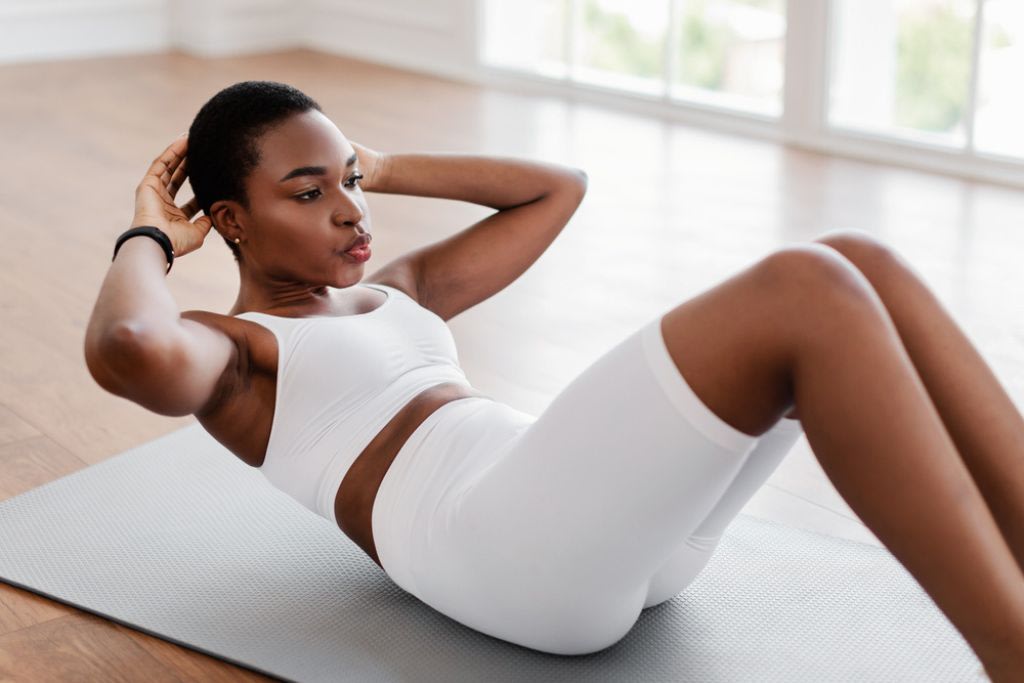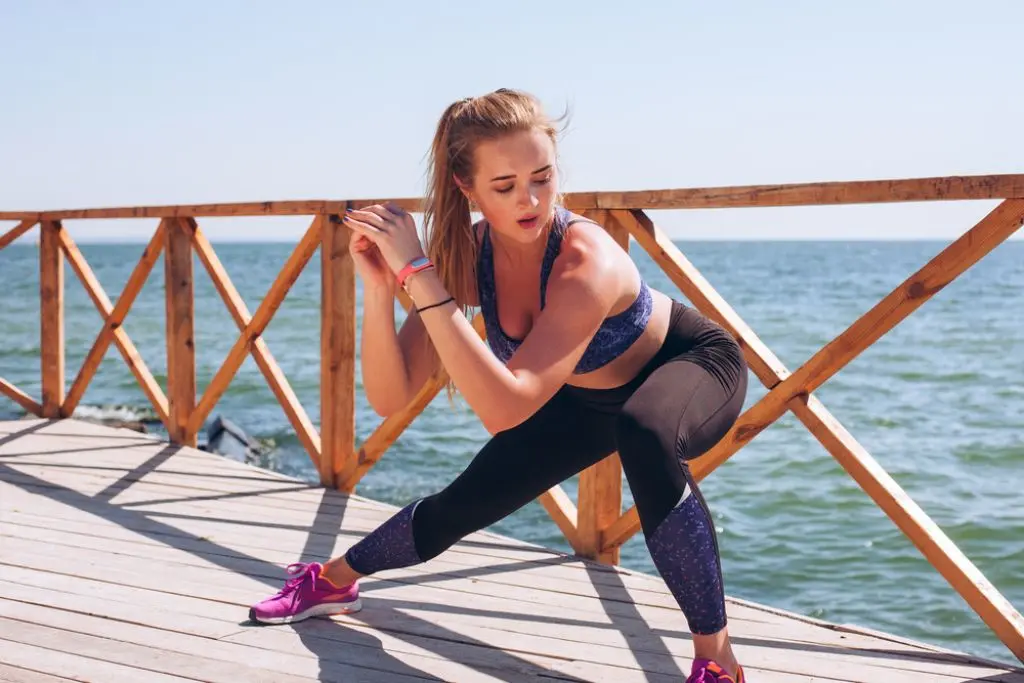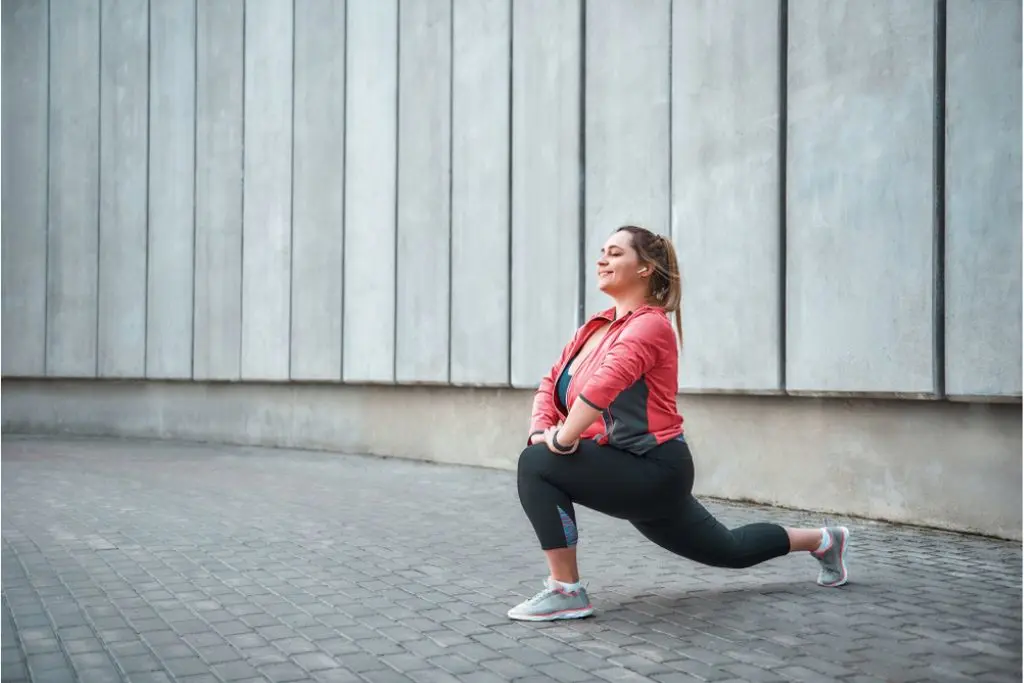Why Spot Training Is A Myth

November 28, 2022

From better energy, sleep, mood and digestion to stronger muscles, bones, cardiovascular system and immunity, we could harp on for days about all the incredible reasons to move your body that have nothing to do with your physical appearance.
However, we also get that everyone’s health and fitness journey is different and for some people, weight loss or feeling more confident in your skin may be a big source of motivation.
If this is a goal for you now or has been in the past, chances are you’ve probably heard of the term ‘spot training’ or wondered how to lose fat in a particular area of your body. Spoiler alert: you can’t.
What is spot training?
Spot training or spot reduction refers to the theory that if you perform exercises that focus on a certain part of your body, you’ll encourage fat loss and muscle toning in that isolated area.
For example, it’s common for people to think that performing hundreds of crunches is the secret to having abs like The Rock, or that certain leg lifts are the key to losing weight around your hips or thighs.
Surprisingly, this isn’t some outdated belief from decades ago. On average, there are still over 17,000 monthly searches for the term inner thigh exercises!
Just like it wouldn’t make sense to go running every day if your goal was to build upper body strength, it pays to understand how fat loss works if this is something you’re trying to achieve.

Why spot training is a myth
As logical as it might sound that feeling the burn in a certain area would mean burning fat in that area, this belief is a complete myth. Why? Because the exercises you perform don’t dictate where you lose fat, nor can you lose fat from one single area of your body.
If it is a goal of yours to improve your body composition or lower your body fat percentage (and it definitely isn’t for everyone), it’s important to understand how fat loss works.
For fat loss to occur, you need to be in a calorie deficit, meaning you are burning more calories than you consume. Each day, your body burns energy not only through exercise, but also by performing all of your bodily functions (like digestion, breathing and your heart beating) and any other movement such as walking to the bathroom or even getting dressed.
When you’re in a caloric deficit, your body then uses energy stored in your cells in the form of fat, however, this energy is drawn from across your body, not the direct area you focused on during your workout.
Research has shown that genetic variations affect how the body responds to exercise and nutrition, and factors such as your hormones and genetics can change the rate at which you lose fat and from which areas.
Yes, performing sit-ups will engage your core, help to strengthen those muscles and you may feel the burn in your abs, but that’s just a chemical reaction caused by the buildup of lactic acid in the muscle - it doesn’t mean you’re burning fat from that area.
Spot training is also an ineffective way to train because it tends to involve exercises that focus on fatiguing relatively small muscles or a single muscle. This means less energy is required to perform the movement and the effect on your overall strength and fitness isn’t going to be as significant as performing compound movements which engage several large muscle groups at once.

Let the research speak for itself
One 2013 study published in the Journal of Strength and Conditioning Research examined the effects of a single-leg resistance training program on total body and regional tissue composition on seven men and four women. The researchers concluded the training program was effective in reducing overall fat mass, but this reduction was not achieved in the targeted area.
Another study from 2013 published in Research Quarterly for Exercise and Sport evaluated the effects of a 27-day sit-up exercise training program on fat cell size and loss, finding the conventional sit-up exercise does not reduce fat or cell size in the abdominal region more than other areas.
There was even a randomised controlled trial in 2011 investigating the effect of abdominal exercise on abdominal fat in 24 healthy, sedentary participants; 14 men and 10 women aged between 18-40. They were randomly assigned to either the control group or the abdominal exercise group, and the results showed no significant effect of abdominal exercises on body weight, body fat percentage, or fat, circumference or skinfold in the abdominal area.
Still not convinced? The Journal of Manipulative and Physiological Therapeutics published a randomised controlled trial in 2015 which aimed to compare the effect of diet and an abdominal resistance training program to diet alone on abdominal fat thickness and waist circumference of 40 overweight women.
The women were randomly divided into two groups, with one group just following a diet and the other following a diet combined with 12 weeks of abdominal resistance training. After 12 weeks, the weight of participants in both groups had decreased, but there was no significant difference between the two for all measurements abdominal fat, waist circumference, hip circumference, body mass index, body fat percentage, and skin fold thickness.
We’ll say it louder for the people in the back: spot training is a myth.

Tips for more effective training
Want to improve the effectiveness of your workouts? Forget spot training and work on your full-body strength and fitness by following these helpful tips:
Follow a full-body workout routine designed to build holistic strength across your entire body. This can either include full-body workouts or training sessions that alternate between upper and lower body.
Performing isolation exercises and targeting specific muscles (take bicep curls for example) can be a great way to build and strengthen that muscle, but be sure to follow a balanced program that also targets other areas of your body to prevent muscle imbalances and discourage overtraining.
If you’ve been focused on changing how certain parts of your body look, try to adopt a more positive and empowered mindset towards your workouts and instead focus on training to be fit, healthy, mobile, strong and feeling like your best self. Practicing gratitude for all the amazing things your body does each day can be a great way to shift your thinking! For Sweat Trainer Kelsey Wells, changing her relationship with her body completely transformed her approach to movement.
Incorporate compound movements which engage several major muscle groups at once, such as squats, pull-ups and deadlifts. You’ll get more bang for your buck than isolating one muscle at a time!
Remember there is no quick fix or overnight solution when it comes to becoming fit, strong and healthy and remember your health and fitness journey is about progress, not perfection.
Choose a training style you enjoy. If you find you’re dreading your next workout, it might be a sign you need to switch things up.
If losing weight or body fat is your goal, try to eat a healthy and balanced diet, combined with an exercise program that includes regular cardio and strength training. But remember - healthy weight loss and seeing fitness progress takes time.
Prioritise sleep and hydration each day.
Remind yourself that the process of losing weight is different for everyone and being fit, strong and healthy is not a single body type - it looks different on everyone!
The bottom line is that while isolated exercises can help build muscle strength and size, spot training will not translate to fat loss in that area. Train in a way you love, nourish your body and have fun along the way - the rewards will be far greater than any change you might see in the mirror!

A more empowered you starts with Sweat, and our editorial team is here to bring you the latest fitness tips, trainer recommendations, wellbeing news, nutritional advice, nourishing recipes and free workouts.
* Disclaimer: This blog post is not intended to replace the advice of a medical professional. The above information should not be used to diagnose, treat, or prevent any disease or medical condition. Please consult your doctor before making any changes to your diet, sleep methods, daily activity, or fitness routine. Sweat assumes no responsibility for any personal injury or damage sustained by any recommendations, opinions, or advice given in this article.
Fitness